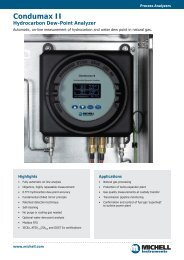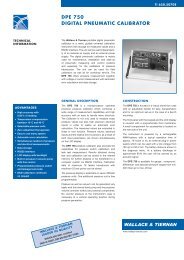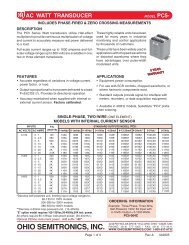FLEX CIRCUITS DESIGN GUIDE
Minco Flex Circuits Design Guide - BiS Sistem
Minco Flex Circuits Design Guide - BiS Sistem
- No tags were found...
Create successful ePaper yourself
Turn your PDF publications into a flip-book with our unique Google optimized e-Paper software.
Design Guidelines<br />
Manufacturing a flex circuit<br />
Building a flex circuit generally involves the same steps from circuit to circuit. However, certain circuit designs can add cost. For example,<br />
a single-layer circuit with access holes on both sides is more expensive than a single-layer circuit with access on one side, because<br />
the double-sided access hole circuit must have its substrate drilled separately. The flow chart and illustrations below identify some cost<br />
driven issues, such as access holes, plated through-holes, etc. The<br />
flow chart shows the manufacturing process for a standard<br />
double-layer circuit with a stiffener.<br />
Base<br />
Material<br />
Drill<br />
Plate Print Etch<br />
Copper<br />
Top<br />
Cover<br />
Drill<br />
Copper<br />
Polyimide<br />
Substrate<br />
Adhesive<br />
Plated<br />
Copper<br />
Bottom<br />
Cover<br />
Drill<br />
1. Double-sided material is drilled 2. Through-holes are copper-plated<br />
Adhesive<br />
Laminate<br />
Conductor<br />
FR-4<br />
Material<br />
Tack<br />
Drill<br />
Solder<br />
Pad<br />
3. Copper is etched to create<br />
conductors and pads<br />
Access Hole<br />
4. Polyimide covers are laminated<br />
over etched copper<br />
Ship<br />
Inspect<br />
Laminate<br />
Blank<br />
Cost impact of layer count<br />
The information for the chart (right) was taken from a sample of<br />
circuits built with Minco’s standard materials. This chart is not<br />
intended to be used as a price guide. However, it does show<br />
that circuit cost generally rises with layer count.<br />
It is in your best interest to consider all options to minimize<br />
cost. For example, use two circuits to do the job of one. Two<br />
double-layer circuits may be less expensive than one four-layer<br />
circuit. But the cost savings of the circuit may be offset by additional<br />
assembly requirements. Circuits can also be folded in<br />
order to save space and layers. Each situation is unique. A relatively<br />
small amount of time invested in project assessment can<br />
result in significant savings overall.<br />
COST MULTIPLIER<br />
6<br />
5<br />
4<br />
3<br />
2<br />
1<br />
0<br />
1-Layer<br />
Access<br />
1-Side<br />
1-Layer<br />
Access<br />
2-Sides<br />
2-Layer<br />
3-Layer<br />
Multi-Layer<br />
CIRCUIT TYPE<br />
4-Layer<br />
Multi-Layer<br />
4-Layer<br />
Rigid-Flex<br />
7







